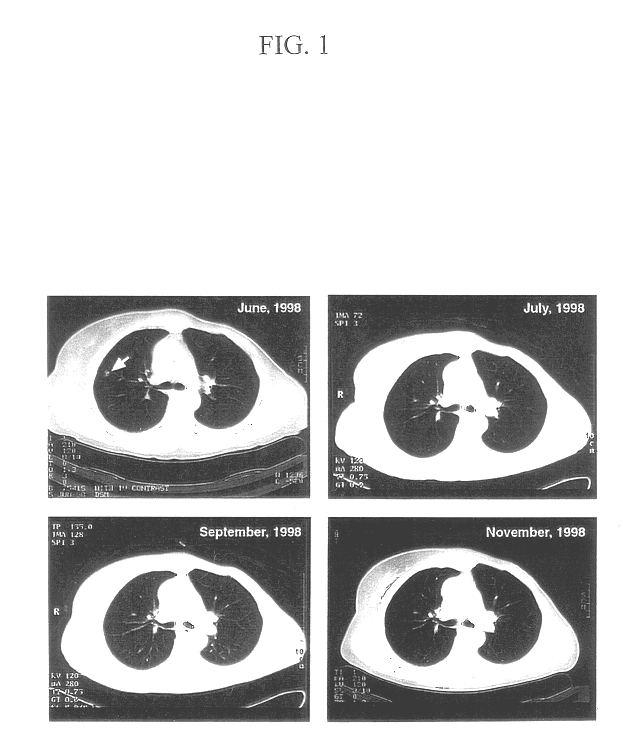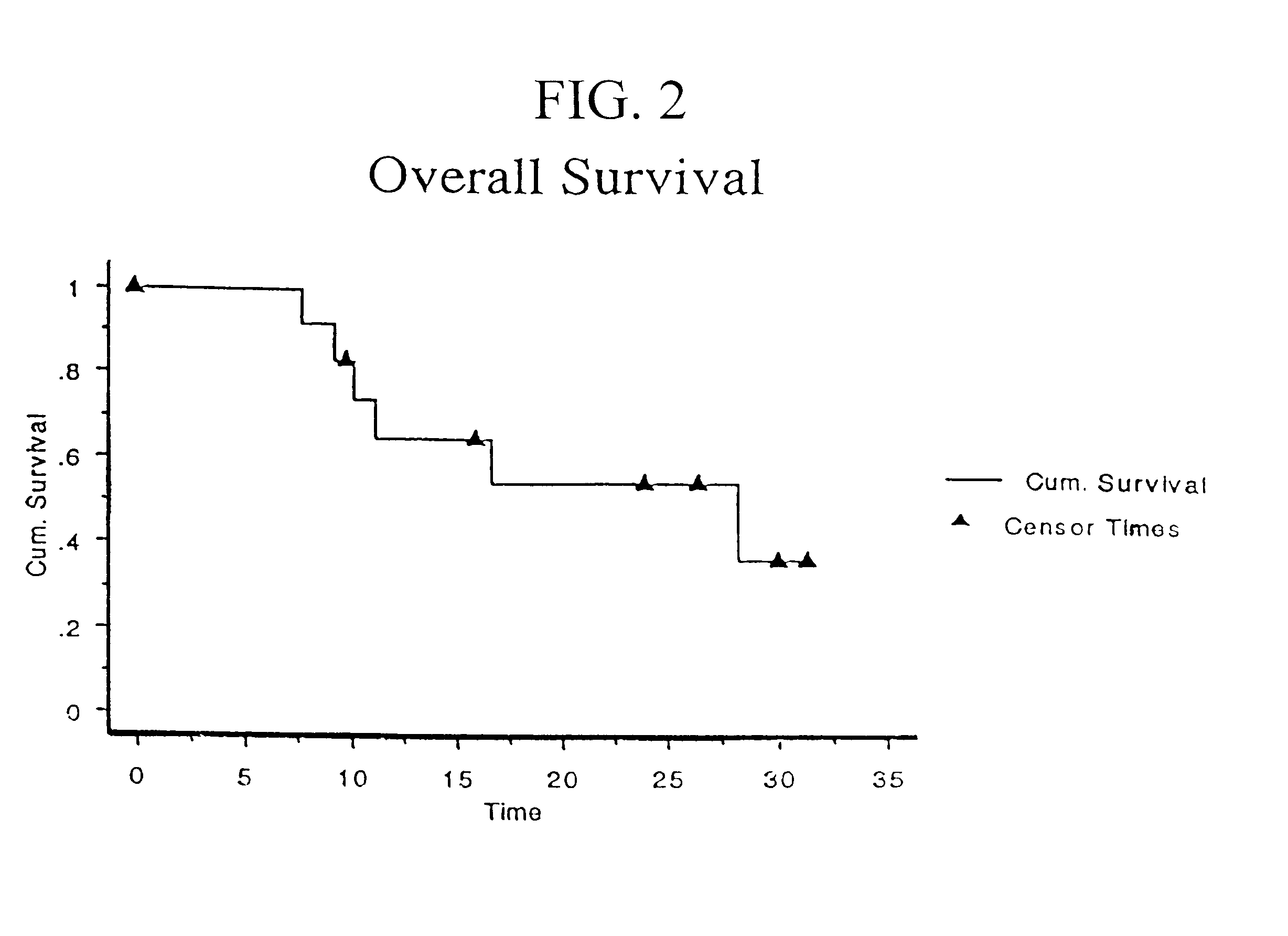Composition and method of cancer antigen immunotherapy
a technology of immunotherapy and cancer, applied in the field of composition and method of cancer immunotherapy, can solve the problems of inability to accept medical interventions that employ t lymphocyte transfer between individuals, the difficulty of manipulating the immune system to treat pre-existing diseases, and the limited success of cancer vaccines
- Summary
- Abstract
- Description
- Claims
- Application Information
AI Technical Summary
Problems solved by technology
Method used
Image
Examples
Embodiment Construction
A. CANCER ANTIGEN IMMUNOTHERAPY
Step 1: Vaccination
The first step in the present invention is the immunization of patients with antigens from their own malignancy. In patients who have a solid malignancy, the cancer is surgically removed to create a single cell suspension of malignant cells. The surgical specimen is enzymatically digested with enzymes manufactured by Life Technologies, Inc. under the name VIACELL. In patients who have hematologic malignancies or solid malignancies with free cells in pleural, pericardial or peritoneal fluid, the malignant cells are obtained from the blood, bone marrow, pleural or pericardial effusion, or ascites fluid. The isolated malignant cells are irradiated at about 5,000 rads to prevent local growth. The cells are stored frozen until the vaccination is performed.
At the time of vaccination, the malignant cells are combined with an immunologic adjuvant, preferably soluble recombinant human GM-CSF that is manufactured by Immunex, Inc. under the nam...
PUM
| Property | Measurement | Unit |
|---|---|---|
| Fraction | aaaaa | aaaaa |
| Fraction | aaaaa | aaaaa |
| Fraction | aaaaa | aaaaa |
Abstract
Description
Claims
Application Information
 Login to View More
Login to View More - R&D
- Intellectual Property
- Life Sciences
- Materials
- Tech Scout
- Unparalleled Data Quality
- Higher Quality Content
- 60% Fewer Hallucinations
Browse by: Latest US Patents, China's latest patents, Technical Efficacy Thesaurus, Application Domain, Technology Topic, Popular Technical Reports.
© 2025 PatSnap. All rights reserved.Legal|Privacy policy|Modern Slavery Act Transparency Statement|Sitemap|About US| Contact US: help@patsnap.com



